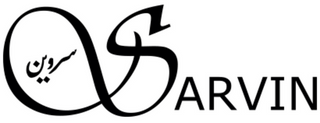SARVIN X EARTH MONTH Slow fashion is the awareness and approach to fashion that assesses the methods and resources required to manufacture clothing. It is a movement advocating for better-quality garments that last longer and require fair and ethical practices throughout all aspects of the supply chain.
Fast fashion is the opposite of slow fashion. It is an entirely unethical and damaging approach to manufacturing garments that focuses on imitating trends and releasing new collections almost every week. Only 1% of all the materials involved are recycled. Fast fashion often exploits its workforce for quick and cheap distribution strategies to meet the high consumption of clothing. Cheap labour is used in places such as Cambodia, Bangladesh and Indonesia. Here workers can be paid as low as $12 working up to 13-hour days.

The harsh reality of these practices came to light on April 24th, 2013, when the Rana Plaza factory in Bangladesh collapsed, killing and injuring 1,000 garment workers. This horrific incident sparked a global revolution, and Fashion Revolution Week began. From April 22nd – 28th, this week encourages the industry to focus on fashion’s responsibility for protecting the environment and its workers. Evidentially the fashion industry demands more resources than what the Earth provides; we all must slow down before it is too late.
Slow fashion is the complete opposite; slower production schedules, small-batch collections, zero-waste designs and an overall focus on producing timeless, practical and quality pieces. The concept was originally coined by Kate Fletcher, who looked at slow fashion as more quality than time-based. During the pre-industrial revolution, slow fashion was the only approach as people would buy durable clothing to be long-lasting and create their clothing from household textiles.

Fashion Revolution Week has become part of Earth Month, taking place throughout the whole of April. It serves as a reminder to think about how we can all make lasting change, raise awareness and unite to stress how important it is for fashion brands to be transparent.
At Sarvin, we take Earth Day exceptionally seriously and continue to work on ways to improve our supply chain to become a more sustainable and ethically conscious brand.
To combat waste, we have started upcycling our scrap fabrics; an example is our MINU scarf. MINU is created from our sustainable silk-like fabric scraps; its print was designed by a Persian artist, Ali Fani Salek. Scarves are such a simple way to reduce waste since they require minimal fabric.

To inform customers, we have a ‘SARVIN BRAND STORY’ section on our website and an ‘ABOUT US’ page. We aim to be as transparent as possible through these. Our product descriptions tell customers the fabric compositions, handmade aspect, and description of the particular eco-friendly fabric used.
To combat ethical trade issues, our founder has visited our suppliers and monitored their working conditions. We have a close relationship with our suppliers, therefore, understand a large section of our supply chain. We continually strive to improve our knowledge of the supply chain, spanning from the start of the fabric being created to the end where the finalised product is dispatched to customers.
Our blog is an excellent source of information for everyone who aims to buy more sustainably. Every Wednesday, we post an article exploring issues within the fashion industry, often relating to sustainable fashion and the environment. As our core philosophy, we want everyone to make sustainable and environmentally friendly choices when buying their clothes.

